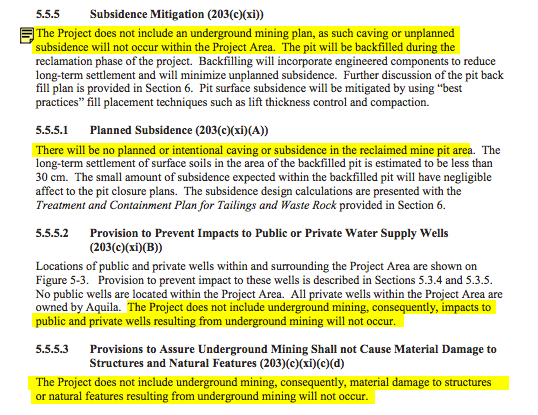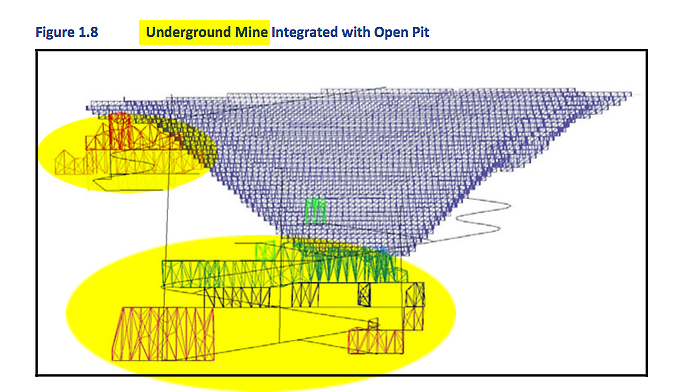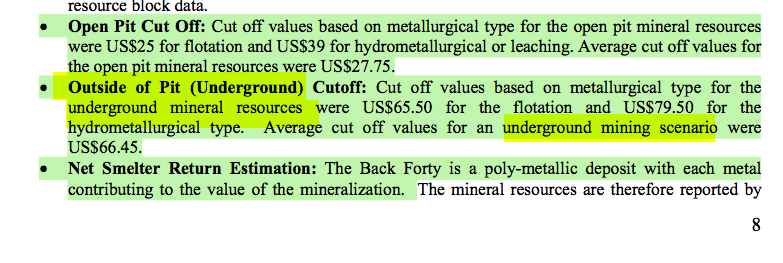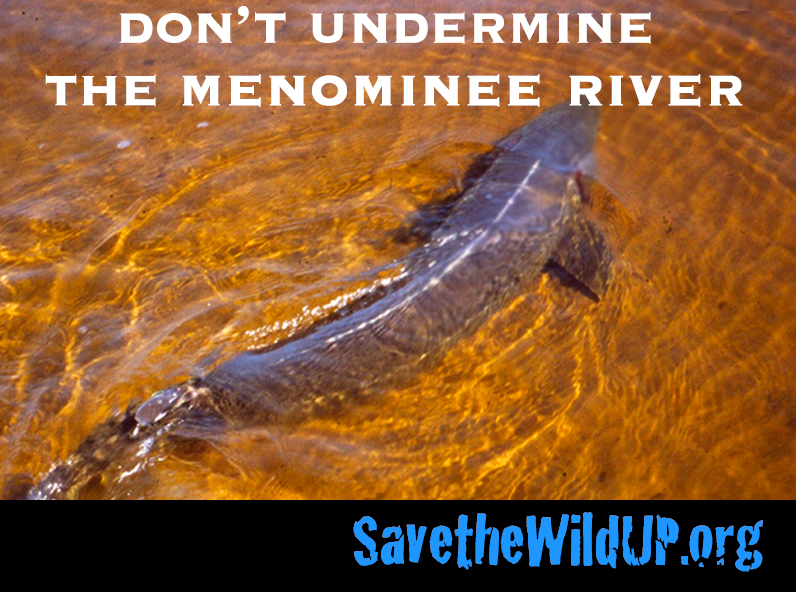
MARQUETTE – Grassroots environmental group Save the Wild U.P. (SWUP) has announced that they will be asking Michigan Department of Environmental Quality (MDEQ) to reject Aquila’s Back Forty mine permit application. SWUP is raising alarming questions about false or contradictory statements made in Aquila Resources’ Back Forty mine permit application. Aquila plans on developing an open pit sulfide mine on the Menominee River, extracting rock, processing ore – containing lead, zinc, copper, gold and other heavy metals – with flotation, cyanide and smelting, and dumping their waste on the banks of Upper Michigan’s largest watershed.
TAKE ACTION: join our SIGN-ON letter to Michigan’s DEQ!
The Back Forty mine permit application – over 37,500 pages, including the environmental impact assessment – is currently under review by the MDEQ. Concerned citizens, regional environmental organizations, and the Menominee Tribe of Wisconsin are also scrutinizing the permit.
When reviewing any mine proposal, one basic question must be answered: “what is the proposed Life of Mine (LOM)?” In order to correctly calculate a mine’s risks, benefits and cumulative environmental impacts, an accurate LOM estimate is essential. According to Aquila’s permit application, “The (Back Forty) Project will be an open pit mining operation” and the “Life of Mine (LOM) operation is planned to be approximately 7 years.”
This is misleading. Elsewhere, Aquila describes the Back Forty project as having a “16 year life of mine (LOM), of which 12.5 Mt is open-pit and 3.6 Mt is underground.” Back Forty is described as a 16 year mine in Aquila’s press releases, in communications with the Menominee Indian Tribe, and in letters to investors and local community leaders. According to their Project Fact Sheet: “we support a transparent process(…) visit our website at aquilaresources.com/projects/back-forty-project for more information.” Visitors to Aquila’s website find a 16 year mine described.
“Apparently, the only folks who haven’t been told about Aquila’s 16 year open pit and underground mining plan are the DEQ regulators who are busy at this very moment, reviewing Aquila’s application for a 7 year open pit mine,” said Kathleen Heideman, SWUP president.
Significantly, the 16 year LOM is described in Aquila’s current NI 43-101 report, required by Canadian Securities Administrators. “Aquila’s NI 43-101 report should be used by Michigan regulators to truth-test whether this company is being ‘open and transparent’ concerning the Back Forty project,” said Michelle Halley, Marquette attorney and member of Save the Wild U.P.’s advisory board.
Is Aquila Lying To State Regulators? Should DEQ Care?
Aquila’s application asserts that mining and milling facilities are scaled to accommodate the life of the mine. By minimizing LOM, the company can misrepresent all of the mine’s impacts, including tailings capacity, size of waste rock storage areas, total limestone needed for neutralizing total waste rock, total need for importing and storing cyanide and other chemicals used in the processing of the ore, total crushing and processing throughput, milling equipment capacity, water treatment plant capacity, dewatering and draw-down estimates, air pollution quantities, noise, pit backfilling estimates, remediation planning, post-closure timelines, and more.
“The Back Forty mine application raises more red flags than I can count – critical oak savannas, sturgeon fisheries, treaty-protected natural resources, and indigenous archaeological sites will be threatened or destroyed by this mining operation. Sulfide mines are known to pollute indefinitely. This mine doesn’t belong on the Menominee River,” said Alexandra Maxwell, SWUP’s executive director.

By claiming that “no underground mining” will occur, Aquila’s application sidestepped valid regulatory concerns under Michigan’s Part 632 rules governing sulfide mining. In the application checklist, underground items were marked “not applicable,” and Aquila skipped questions about Subsidence, Impacts to Public or Private Water Supply Wells, Closure of Openings and more, stating “project does not include an underground mine as such contingency planning for subsidence is not required.” In the permit application, Aquila flatly states “underground mining was considered but rejected (…) underground mining is not a prudent alternative for this ore body. The shallowness of the ore body, specifically the shallow ore zones, heavily influences the effectiveness of open pit mining.”
“Actually, Aquila hasn’t ruled out underground mining anywhere else — only in their permit application. Are they talking out of both sides of their mouth?” asked Heideman. “It undermines their credibility.”
“The Aquila Back Forty project must not be permitted on the basis of a fraudulent permit application for a short-lived open pit mine, only to have the company request endless revisions until Back Forty’s open pit gradually morphs into an unrecognizable and potentially unregulated underground mine,” warned Maxwell.
The Back Forty mine permit application for a 7 year mine appears misleading and inaccurate, at best, and fraudulent at worst. Aquila’s clear intent — expressed in every document except their mine permit application — is to develop a 16 year mine. Tacking on a subsequent underground mining phase could increase the mine’s life by a factor of 129%, forcing dramatic and non-public-involved revisions to every aspect of the permit application currently under review by the State of Michigan.
“If Aquila affirms that this 7 year open pit LOM is accurate, and defends the permit application, all public statements containing the Back Forty’s 16 year life of mine estimate should be viewed as baseless or fraudulent statements, designed to attract investors and gain greater political and community support,” said Heideman.
“Misinformation about the ‘life of mine’ has infected this permit application. We are asking DEQ regulators to act promptly to dismiss Aquila’s mine permit application, given the inaccurate statements. Public trust in our regulatory process is at stake,” said Maxwell.
DEQ Public Comment Deadline Extended
Concerned citizens are urged to submit their written comments by 5:00 P.M. on Tuesday, February 16, 2016. Mail comments to MDEQ Back Forty Mine Comments, Office of Oil, Gas, and Minerals, 1504 West Washington Street, Marquette, Michigan, 49855; or by email to Joe Maki: makij3@michigan.gov
Founded in 2004, Save the Wild U.P. is a grassroots organization dedicated to defending the clean water and wild places of Michigan’s Upper Peninsula from the threat of sulfide mining. For more information contact info@savethewildup.org or call (906) 662-9987. Get involved with SWUP’s work at savethewildup.org on Facebook at facebook.com/savethewildup or on Twitter @savethewildup.
##








